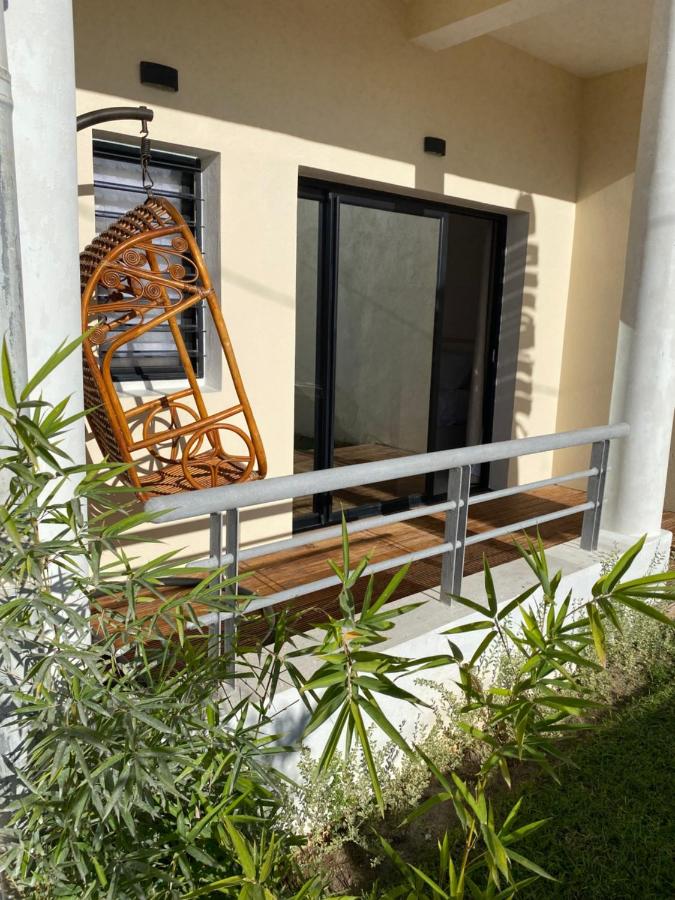The endemic flora of Madagascar
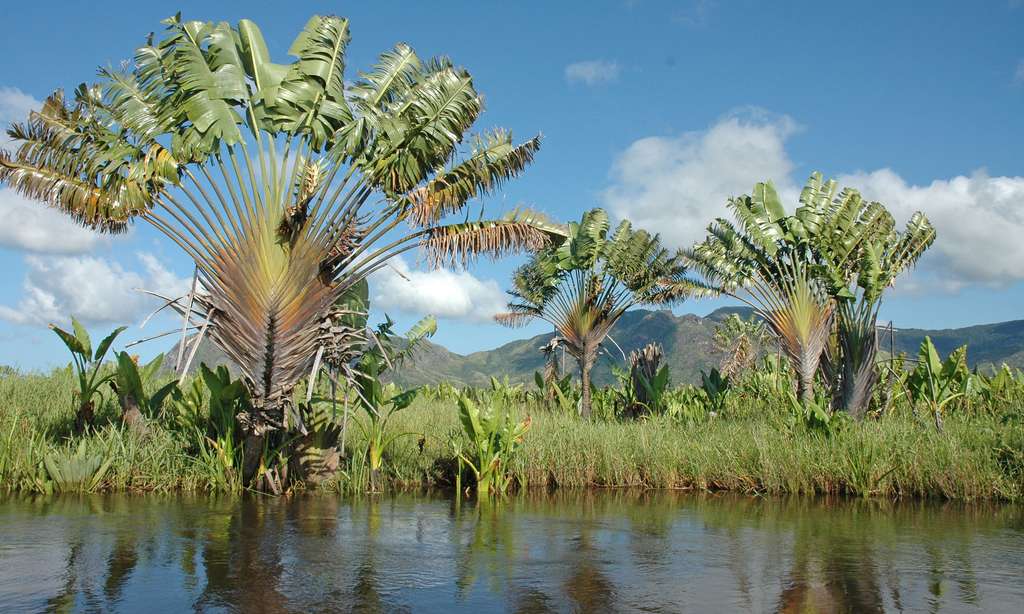
The endemic flora of Madagascar, unique natural wealth in the world.
Madagascar, also known as a green island, is generally endowed with an incomparable generous nature. Formerly attached to the continent of Africa, this island has kept many floristic particularities: fertile lands, very diversified vegetation covering 75% of the island, endemic terrestrial and aquatic species… This framework makes all the beauty of the island and its neighborhood.
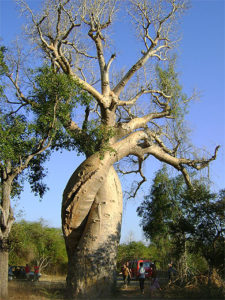
Baobab in love
Morondava Madagascar
Its flora, for its part, potentially exploited by the Malagasy, offers them advantages compared to other continents. Its great privilege is to have access to medicinal plants only existing in its regions. Its vegetation provides benefit to the body while curing it of all diseases. We must also add the use of traditional plants during the cultural rites of the clans transmitted by the ancestors.
“The “Ravinala”, tree of the traveler, is the perceived image of the symbol of the country, it is represented on the logo of Air Madagascar and on the proper Malagasy currency.
In a simple vision, its fertile land offers the property of being able to produce abundant vegetal matter throughout the year. In the more modern farms, for example, we see an evolution of the old ways of cultivation. Notably seen in Ivato, “la ferme d’Ivato et l’Auberge” practices the cultivation of several species of vegetables such as cabbages, varieties of nuts, cereals… Elsewhere, we find the “endemic biodiversity” of plants such as the cultivation of orchids.
In a deep vision of the island, visitors from other countries come to discover the wonders found there: good entertainment in the bush categories, the “Baobab” alley of Antsirabe one of the best places to watch the sunset, the hills and dense forests, … This majestic landscape is mainly the natural habitat of the animals of the island.
Accompanied by its semi-tropical climate, Madagascar manages to give life to all types of plants in its four corners. On the sides, a more tropical vegetation is dominated by coconut and palm trees. This area gives its inhabitants the opportunity to cook exotic dishes: the “ravitoto”, one of the Malagasy specialties mainly in its capital.
In the island, the guides make you explore the flora of the lakes and rivers like the “Tatamo”, the flora of the dry forest in the West with its siliceous grounds, the flora of the central Highlands or High Plateaux, the flora of the rainforest in the East and the North-West and the flora of the mangroves in the tidal areas. However, it is necessary to protect the natural heritage from the dangers of excessive exploitation.
On a more professional level, Madagascar lives from this asset. Indeed, the primary sector is the most dominant of all these sectors. Through its wealth, the island cultivates its staple food which is the Malagasy “rice”. It exports to the outside world all types of food and plants: the exploitation of vanilla makes more noise in the sale of its local products.
Go on an adventure in the tropical and wild flora of the island of Madagascar.
Lys Carène ANDRIAMANANTSOA.
Endemic plant of the south of Madagascar
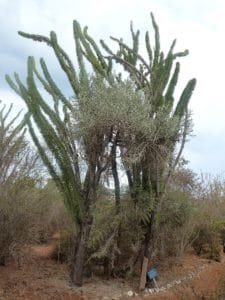
Didierea madagascariensis
Locally called “Sogny”, the octopus tree belongs to the Family Didiereaceae. It is the emblematic species of the thorny forests of southern Madagascar. Endemic to Madagascar, it is a very thorny tree that reaches 6 meters high. It is its ramifications starting from the base which give it the shape of octopus and which are worth its name. Its small leaves and flowers are well protected by the big branched spines.
Alluaudia comosa
It is also called the funnel tree. In the south of Toliara “Sonondratrake”. It belongs to the family of Didiereaceae. It is a species which is found only in the thorny forests and on the calcareous ground of the south. This shrub is 3 m high and has a parasol shape. It is well adapted to dryness: its leaves are round, small and succulent (fleshy to better retain water). Because of their small size, its leaves also limit water loss by evapotranspiration.
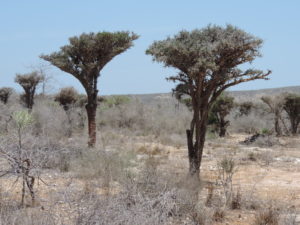
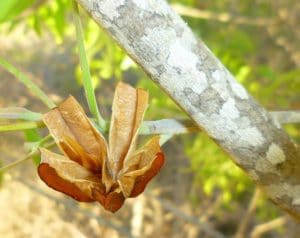
Cedrelopsis grevei
The white mahogany of Madagascar or Katrafay is endemic to the big island and is found in dry and thorny forests. It is a very straight tree reaching 20 m high, whose wood is highly prized in construction (sculpture, cabinet making, carpentry …) while the bark and leaves, fragrant, have medicinal uses. The essential oil from the bark of the Katrafay is commonly used in massage to treat aches and pains affecting the whole body, fractures, muscle pain, arthritis, fatigue and fever. The seeds of Katrafay are flattened and winged, they disperse very easily and grow wherever the wind takes them.
Pachypodium geayi
The bottle tree is one of the jewels of the Southwest. Its local name is “Vontake”. It is endemic to the thorny forest of southern Madagascar. The plant is covered with thorns when it is young, with a tuft of leaves at its top making it look like a palm tree. The adult tree has a straight, pale, very dry, columnar trunk that can reach 5 m high. The tree gets its name from the fact that it stores water in its bulging trunk. It is an ingenious form of adaptation to the scarcity of rain. It is only at the top of the branches that one observes the leaves in the adult plant. Its flowers are white and perfumed. The bottle tree is a superb ornamental tree.
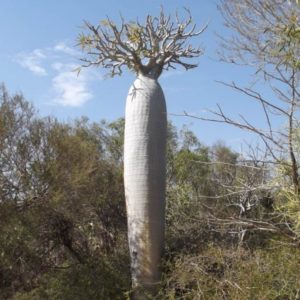
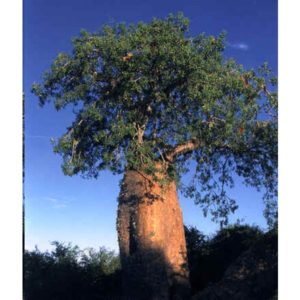
Adansonia rubrostipa
The Baobab “Fony” is one of the 7 species of baobab that exist only in Madagascar and nowhere else in the world. The Baobab fony is the smallest species of baobab. It is 5 meters high and is very remarkable with its massive and bulging trunk in the shape of a bottle which can reach 5 meters in diameter. This species of baobab is found on the southern and western coast of Madagascar. The plant belongs to the Malvaceae family (like the Hibiscus). The flowers are large, very beautiful yellow to red and the fruits are in the form of dry and spherical pods. The fruit is an important source of food for local communities, especially during the lean season. The pulp of the fruit and the seeds are eaten fresh. A Baobab fony of more than 1600 years old called “Baobab grandmother” lives in the heart of the National Park of Tsimanampesotse. It is one of the oldest trees on the planet.
Euphorbia alluaudii subsp. Oncoclada
Also called “Famata”, the Euphorbia sausage is a shrub of the family Euphorbiaceae. It is an endemic plant of Madagascar. It can reach 3 m high and has a coral shape. And what a shrub, it has no leaves. They are absent to limit the loss of water, in the arid environment of the south of Madagascar, ingenious, no? Instead of leaves, it is the branches articulated in sausage strings and green colors that ensure photosynthesis.
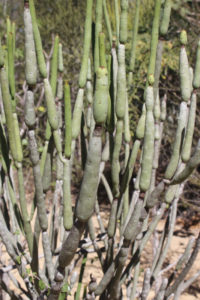

Operculicarya decaryi
This tree, endemic to the thorny forest is the elephant tree. It is locally called “Jabihy”. It is a bush with a bulging trunk and tapered into a cone resembling the legs of an elephant. The small leaves and purple flowers are found at the top of the branches. It is a succulent plant that grows like a natural bonsai in the face of scarce rainfall and poor soil nutrients.
some orchids from Madagascar
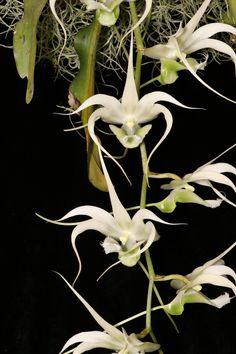
Aeranthes
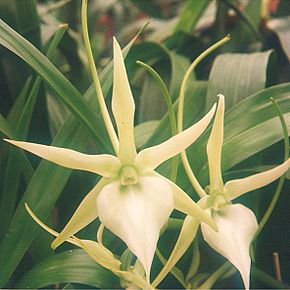
Angraecum
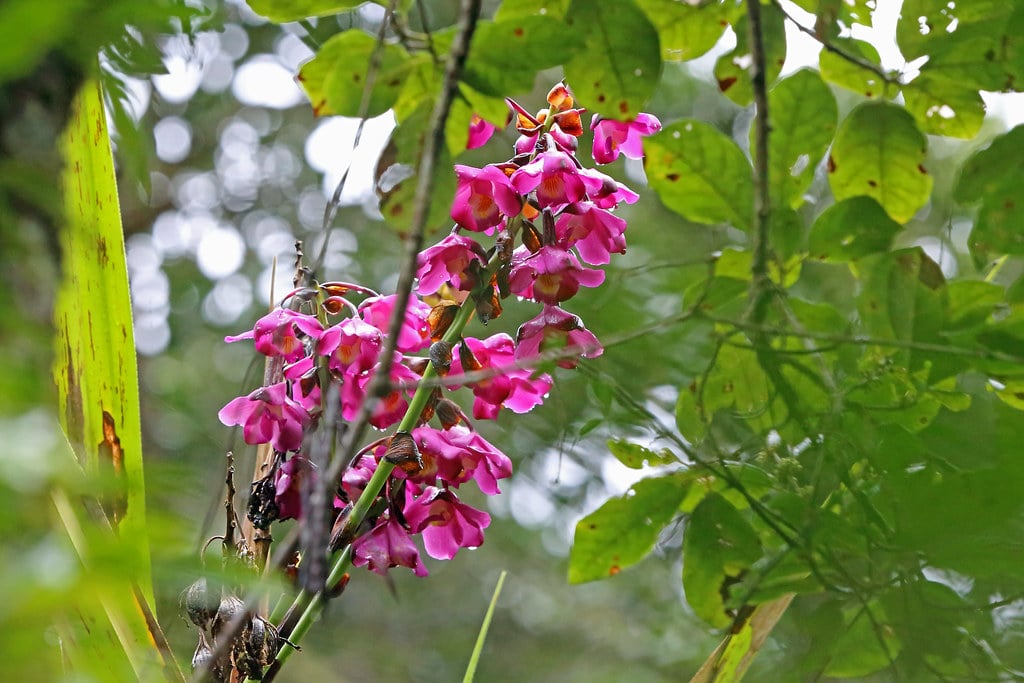
L’Eulophiella roempleriana
Grammangis

